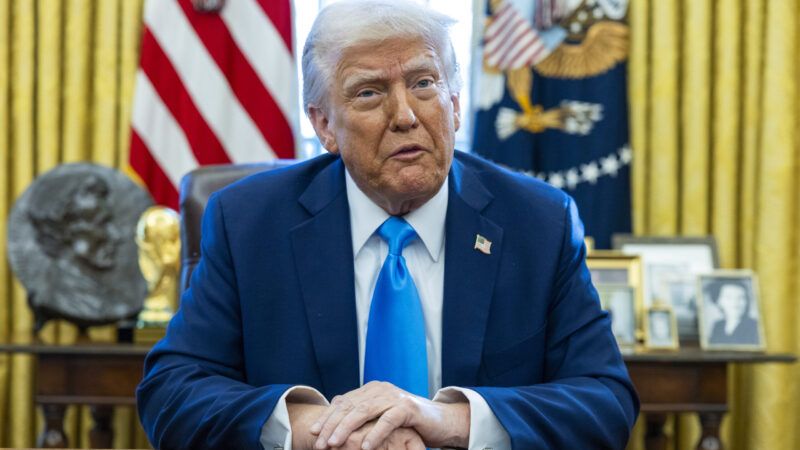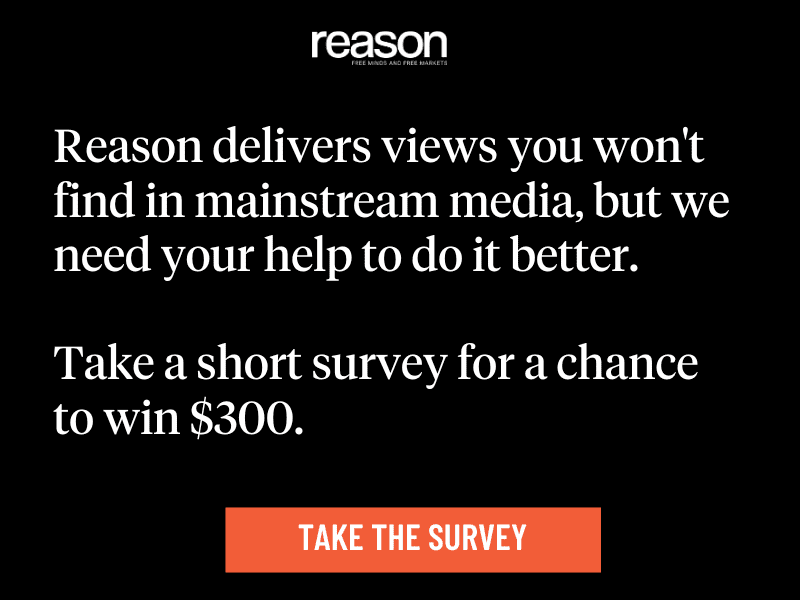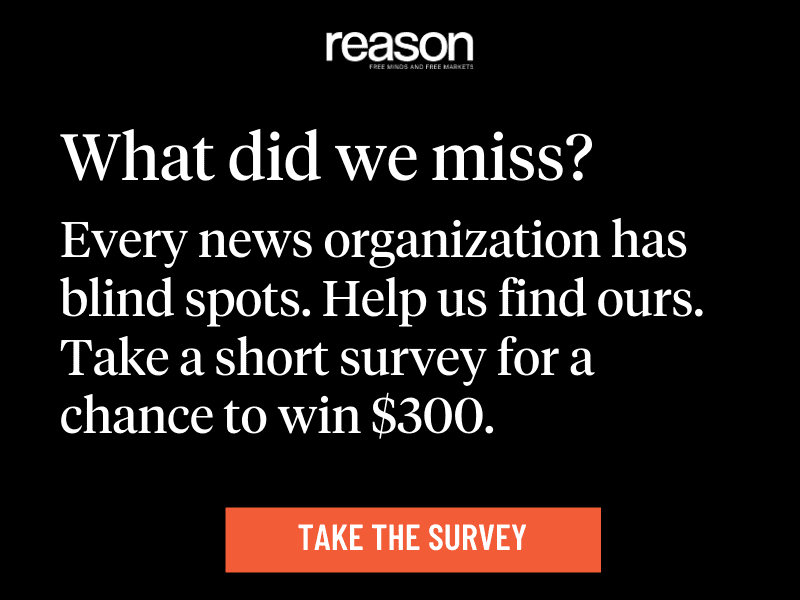Here Is How Trump Can Falsely Claim His Tariff Threats Helped Win the Drug War
The president can cite meaningless "adequate steps," ambiguous drug seizure numbers, and a decline in drug deaths that began before he took office.

It seems President Donald Trump's plan to fight drugs with punitive tariffs on China, Mexico, and Canada, which never made much sense, was little more than an attempt to look tough. Trump threw his weight around, and now he can claim victory after extracting concessions that will have no meaningful impact on the problem he claims to be addressing.
In exchange for a one-month delay in the 25 percent tariff that Trump announced over the weekend, Mexican President Claudia Sheinbaum is assigning 10,000 members of Mexico's National Guard to border control. As Mexican journalist Carlos Loret de Mola notes in an El Universal column, this is essentially the same deal that Sheinbaum's predecessor, Andrés Manuel López Obrador, struck with Trump in 2019 during a similar tariff showdown. Canadian Prime Minister Justin Trudeau won the same dispensation simply by proceeding with preexisting anti-drug plans. And although Trump's 10 percent tariff on Chinese imports took effect today, negotiations with the Chinese government may yield a promise to crack down on manufacturers of fentanyl precursors.
None of this will do much to stop "dangerous narcotics" from entering the United States, which is Trump's avowed goal. Interdiction efforts are doomed by the economics of drug prohibition, a challenge that is compounded by fentanyl's potency, which allows traffickers to distribute large numbers of doses in small packages by land or mail. And Mexican cartels are already working on domestic production of fentanyl precursors in case shipments from China are curtailed. Despite those realities, Trump can still falsely claim he is winning the war on drugs by citing misleading metrics.
Trump said the tariffs would remain in place until the targeted countries took "adequate steps to alleviate the opioid crisis." Since that criterion is deliberately vague, Trump can simply declare that whatever Mexico, Canada, and China agree to do is "adequate."
In case that seems too slippery, Trump could cite drug seizure numbers as proof of his success. The beauty of this approach is that Trump can claim victory no matter which way the numbers go.
Given Trump's promise to "seal the border," you might expect U.S. drug seizures to go up. But he has previously argued that increased seizures are a sign of failure rather than success.
"Drugs are pouring in at levels never seen before," Trump said on Meet the Press in December, explaining the rationale for his new tariffs. "They're just pouring in. We can't have open borders."
Fentanyl seizures by U.S. Customs and Border Protection (CBP) rose from 7,330 pounds in 2020 to more than 25,000 pounds in 2023. That trend, Trump assumed, was not a triumph for interdiction. Rather, it signaled an increase in supply, which he blamed on Joe Biden's weak border policies.
That argument depends on the realistic assumption that "federal officials are only able to seize a fraction of the fentanyl smuggled across the southern border," as the White House conceded on Saturday. But Trump could abandon that assumption and hope that no one notices the contradiction, arguing that increased seizures on his watch are evidence of his seriousness.
That might be a bit tricky, since the White House emphasized the sheer volume of fentanyl seizures in making the case for Trump's tariffs. "Last fiscal year," it said, CBP "apprehended more than 21,000 pounds of fentanyl at our borders, enough fentanyl to kill more than 4 billion people."
The math checks out! According to the National Center for Drug Abuse Statistics, 0.002 grams of fentanyl is a lethal dose, and 21,000 pounds is 9,525,440 grams, or about 4.8 billion lethal doses. And since that represents just "a fraction of the fentanyl smuggled across the southern border," we can surmise, the fentanyl that got through was enough to kill every human being on the planet several times over.
The relevance of such calculations is open to question. But in 2023, according to the Centers for Disease Control and Prevention (CDC), the category of synthetic opioids that includes fentanyl was implicated in nearly 73,000 U.S. deaths, which is bad enough. The White House notes that "more Americans are dying from fentanyl overdoses each year than the number of American lives lost in the entirety of the Vietnam War."
Unlike "adequate steps" and drug seizure numbers, overdose deaths are a clear measure of whether the "opioid crisis" is getting better or worse. The good news is that drug-related deaths fell precipitously last year after climbing nearly every year for more than two decades. According to preliminary CDC estimates, the death toll during the year ending last August was about 22 percent lower than the total for the previous year—by far the biggest such drop ever recorded.
Inconveniently for Trump, that dramatic decrease happened on Biden's watch, and there is little reason to think interdiction had anything to do with it. So even if the apparent turnaround continues this year, attributing it to Trump's tariff-assisted war on drugs would be highly implausible. We can nevertheless expect that Trump will do just that.
In the end, any specific criterion probably matters less to Trump than the general impression that he did something. "He doesn't need to have a metric," John Feeley, a former U.S. ambassador to Panama, told The New York Times. "You're making a mistake if you think he's sitting there with a spreadsheet. He's not. He's sitting there looking at headlines."




Show Comments (79)